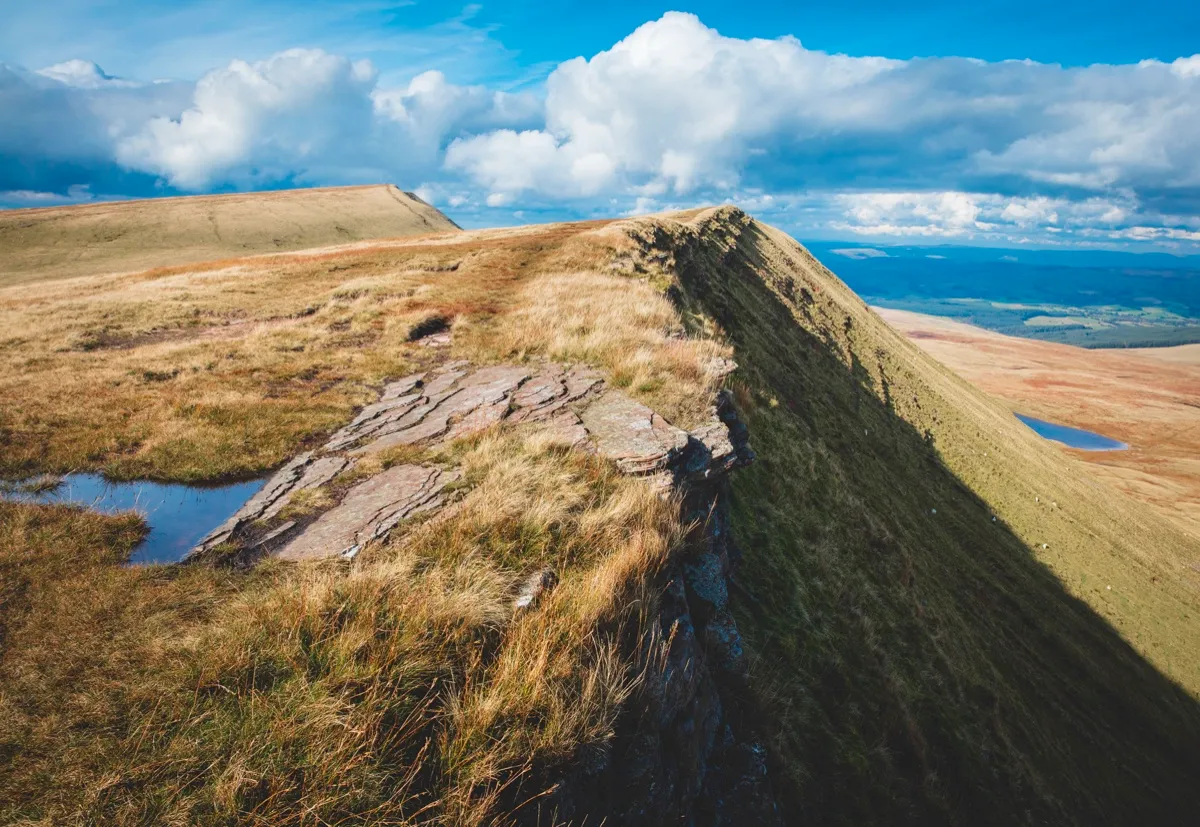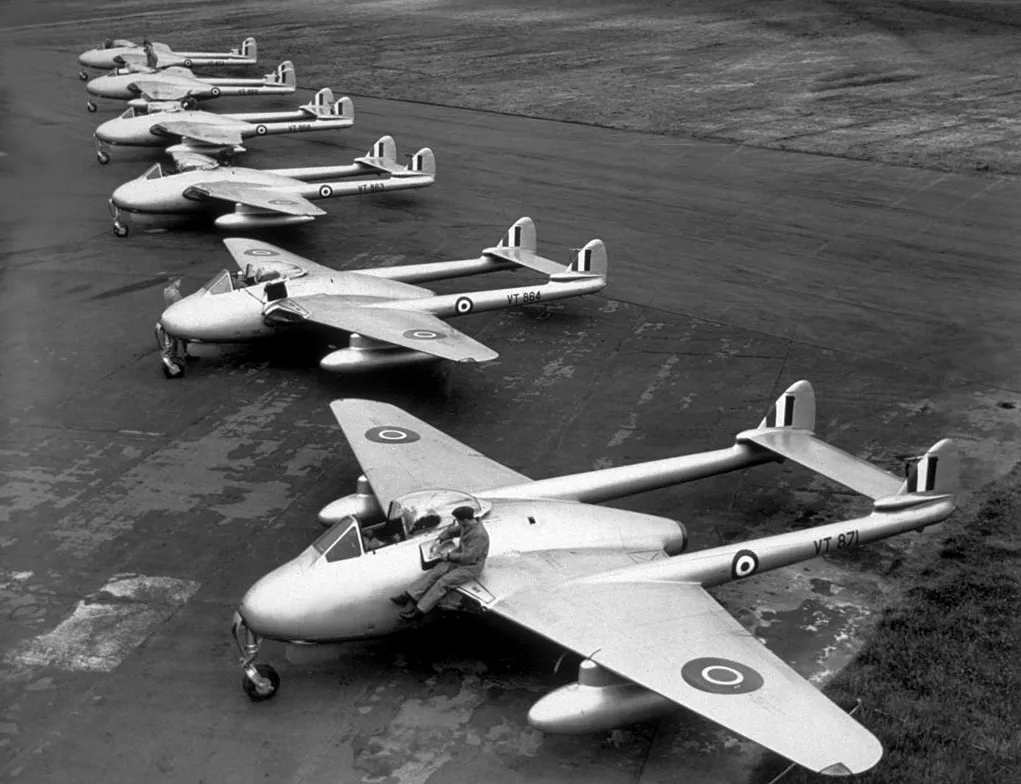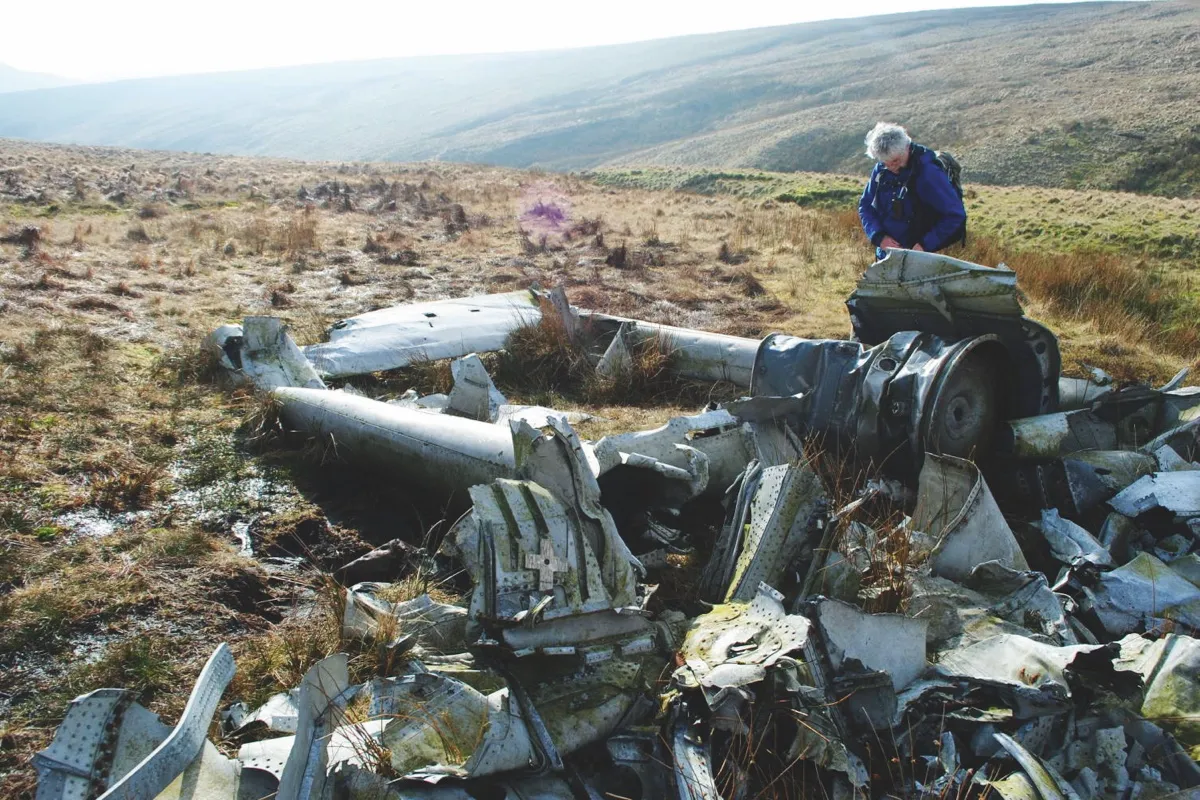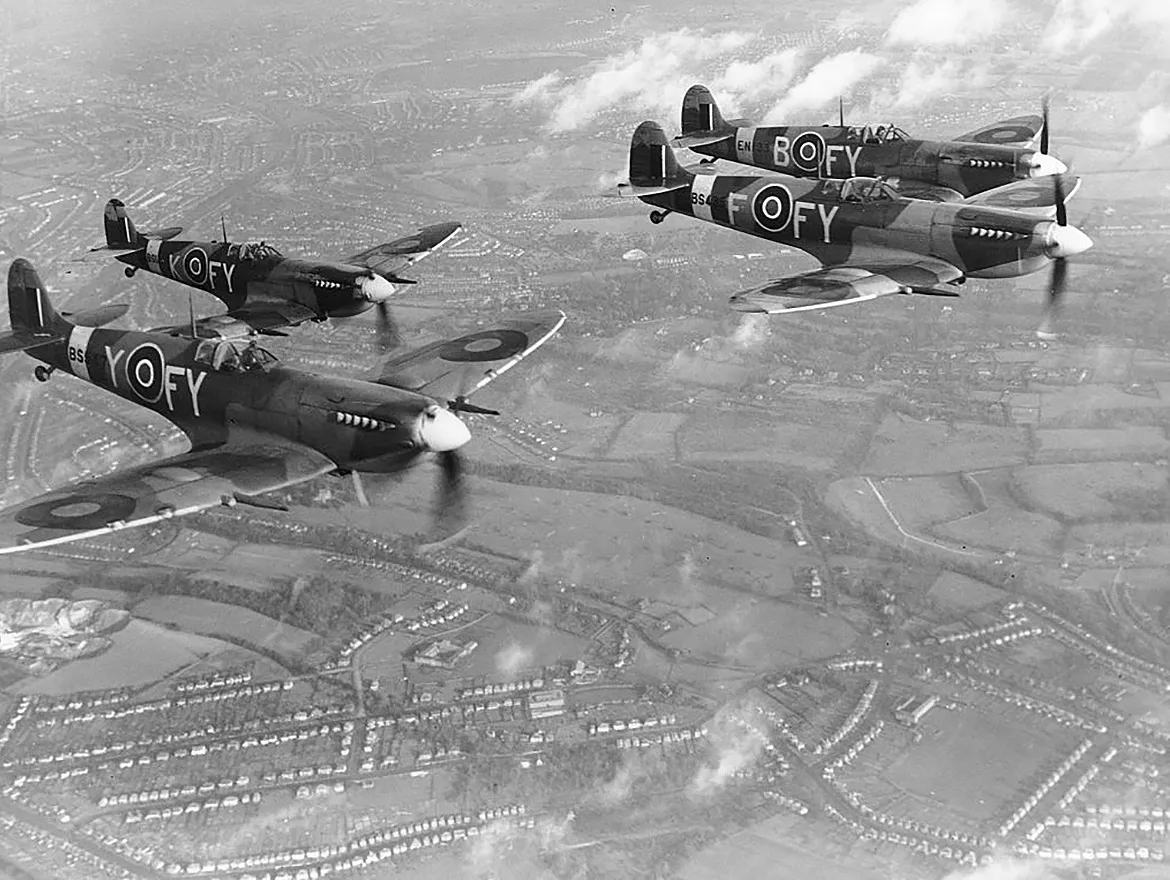Guide to aircraft crash sites in the Brecon Beacons National Park.
The broad Brecon Beacons National Park has a long history as a military training ground. But this mountainous expanse of wild land can be treacherous, and the wrecks of many unfortunate aircraft still litter its slopes.
Here are three of the most impressive to seek out on a ramble.
Wellington bomber, Carreg Goch
It’s hard not to be moved by the volume of wreckage still in evidence on this site today. The Vickers Wellington that caused it came down on the night of 20 November 1944 after developing an icy build-up in its starboard engine. All six members of its Canadian crew were killed. A stone and concrete memorial marks the centre of the site, sometimes strewn with poppy wreaths.

It is accompanied by two plaques – an older one listing the names of the dead and a more recent 2006 addition commemorating the unlikely visit of one of their surviving sisters, made possible only after much searching and cooperation between local people and authorities in Canada.
The site is only 3km west of Glyntawe on the A4067, but it’s also about 300m above the road and sits among rough and pockmarked ground near the summit of Carreg Goch (558m). Climb up to it and you’ll find the bulk of the metalwork around grid reference SN817168 – it increases in size and volume as you head from west to east across the area, at its most chilling including large sections of each wing. One of the bomber’s wheels can be found far from the main cluster, northwards towards the River Giedd: testament to the violence of the crash.
Vampire fighter plane, Fan Hir

Also in the westerly Black Mountain region, and only 3-4km north-north-east of the Wellington bomber, sits the remains of a single seater De Havilland Vampire FB5. Brought into service at the war’s close in 1945, this particular plane crashed eight years later, on 9 October 1953, after mistakenly descending into the mountainside out of thick cloud. The setting is wild and the ground is rough, but overcome it and you’ll find the wreckage at SN826201.

What remains today has been arranged into a shape broadly resembling the fighter’s original form and includes many instantly recognisable pieces, such as the jet exhaust. Sitting just off the escarpment of Fan Hir, approach from Bwlch Cerrig Duon at SN855223 or as part of a Black Mountain traverse starting from the end of the road past the hamlet of Llandeusant to the north.
Spitfire fighter plane, Craig Fan Ddu
It would be impossible to provide a guide to WW2 crash sites without including at least one example of the iconic Supermarine Spitfire. One of the most intruiging wrecks in the Beacons also happens to sit in a dramatic position, 5km south of Pen y Fan, Corn Ddu and the main peaks in the centre of the Park. The wreckage here (found at roughly SO0118, although it requires some searching) is minimal in comparison to the other two sites and only recognisable as such by being gathered around a small cairn, marked with a perspex plaque reading: “Sgt Donald Perry Carruthers crashed Spitfire X4588, 23rd May 1942 aged 20. R100418 RCAF.”

Bad weather and navigational error are believed to have caused his crash. Many pieces of the plane have been removed over the past 74 years, so it’s perhaps best to approach seeking out this lonely site as an addition to a walk on these great peaks (starting from either the Storey Arms Centre to the west, or the Taf Fechan forest to the south-east).